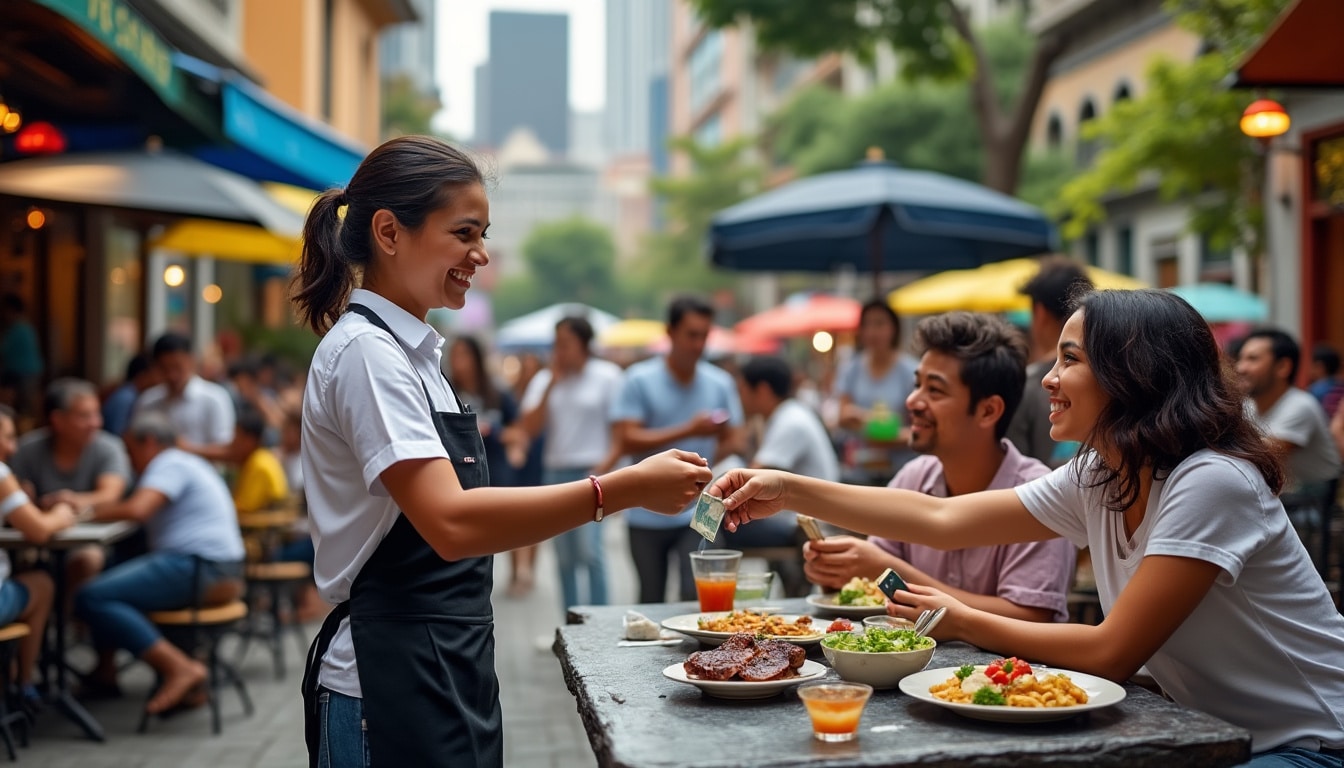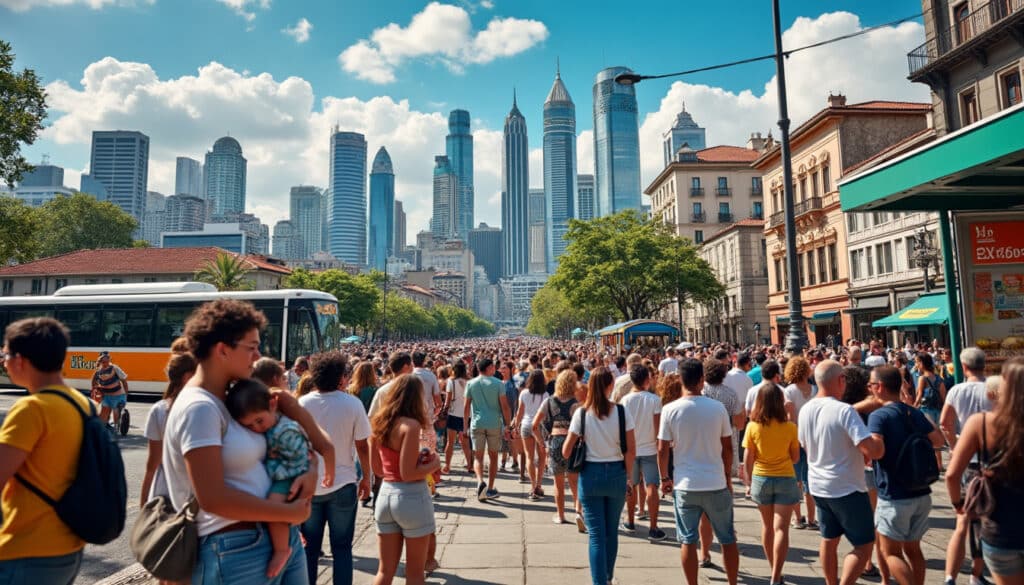Sao Paulo, a bustling metropolis filled with vibrant culture and rich history, welcomes visitors with open arms. As one navigates through its myriad neighborhoods and experiences the local cuisine, art, and nightlife, understanding the local customs, particularly tipping and payment habits, becomes essential. In a city where traditions intertwine with modernity, knowing the local etiquette not only enhances your visit but also shows respect for the community you are a part of. Dive into the intricate world of tipping and discover how digital payment methods have integrated into the everyday life of Sao Paulo’s inhabitants in this comprehensive guide.
Understanding Tipping Culture in Brazil
Tipping in Brazil is a nuanced practice, shaped by cultural norms and economic factors. While tipping is a relatively universal gesture of appreciation for service, its application varies significantly across the globe. In Sao Paulo, this custom is no different. At restaurants across the city, a common practice is to include a 10% service charge, noted on the bill as “serviço.” Although not obligatory, this charge is widely accepted as the norm.
Yet, the practice of tipping extends beyond restaurants. For instance, baristas and café servers may appreciate a modest extra, especially in boutique cafes. Bars and nightclubs often have the service charge included in the final bill, similar to restaurants, thus eliminating the necessity for additional tipping. It is not as common to tip bartenders directly at these venues, which may come as a surprise to visitors from countries where such tips are customary.
Furthermore, in less formal settings, such as street food vendors or small eateries that operate on a self-service basis, tipping is practically unheard of. This divergence in practices may stem from the economic realities, where the population does not typically supplement low-income workers’ earnings with tips, unlike in some other cultures. Instead, these establishments may focus on competitive pricing and volume to sustain their businesses.
The tipping etiquette is equally varied in service sectors outside of the food industry. Taxis, for instance, usually do not require a tip, although rounding up the fare for convenience is appreciated under circumstances where metered fare is applicable. However, with the growing popularity of ride-sharing services like Uber, the tipping culture here is experiencing a shift, as these platforms often include tipping options within their apps.
Ultimately, the key to navigating tipping in Sao Paulo lies in understanding the context in which services are provided. As practices can vary widely even within a city, observing locals and considering service quality can guide you effectively. Utilize resources like Sao Paulo Booking for more insight into specific tipping norms across various establishments.

Exceptions and Exceptional Service
While the 10% tip is largely considered standard practice, there are instances where tipping might deviate from this norm. For instance, exceptionally good service at a fine dining restaurant may warrant a larger tip, an additional gesture of appreciation for an impeccable experience. Similarly, on guided tours, whether exploring the historical landscapes or indulging in a cruise along the coast, it is customary to tip the guide approximately 10% of the tour price.
Even in accommodations, the approach to tipping can vary. Bellhops assisting with luggage typically receive a small gratuity, roughly equivalent to R$5-10, depending on the quantity of luggage and level of service. Meanwhile, housekeeping staff are less accustomed to tips, although leaving R$5 per day for thorough service might be appreciated.
Challenges still arise for those unfamiliar with these practices. Differentiating between services that include tipping in their fees and those that do not can seem daunting at first. Businesses in Sao Paulo, especially those catering to international visitors, provide clear guidance regarding their tipping policies, which can alleviate some of this uncertainty.
While navigating tipping culture can be intricate, following the local lead and maintaining cultural sensitivity will help foster a meaningful exchange. After all, tipping not only acknowledges the labor that goes into providing exceptional service but also builds bridges between cultures, enhancing the travel experience.
Payment Methods in the Digital Age
Sao Paulo, a hub of economic activity, is a city where traditional payment methods meet digital innovation. In recent years, there has been a significant shift towards cashless transactions, driven by convenience and technological advancements. Digital wallets and payment apps like PagSeguro, PicPay, and Mercado Pago have become ubiquitous, particularly in urban areas. These platforms allow residents and tourists alike to make purchases seamlessly with a simple tap or scan.
Moreover, contactless payments have been bolstered by the widespread availability of point-of-sale systems such as Cielo and Rede, which ensure secure and efficient transactions. As a result, carrying large amounts of cash has become less necessary, making daily transactions more streamlined and less prone to security risks. This shift has also facilitated the inclusion of various demographics into the financial system, fostering economic growth and inclusion.
Despite the growing preference for digital transactions, cash remains a widely accepted form of payment, particularly in smaller businesses and markets. Vendors in traditional street markets and family-owned eateries often prefer cash for the immediacy and simplicity it offers, although they are increasingly adopting digital methods as well. Notably, innovation in the payments sector is supported by major financial institutions like Banco do Brasil and Porto Seguro, which provide infrastructure and financial products catering to both digital and traditional banking needs.
When navigating Sao Paulo’s payment landscape, being informed about both digital and traditional methods ensures that you are prepared for various scenarios. While major credit cards are typically accepted in larger retail environments, being equipped with both options can help avoid potential inconvenience. To better understand payment strategies and where to shop, explore resources like Sao Paulo Expense Planning.
Emerging Trends in Payment Behavior
As Sao Paulo continues to evolve, so do the payment preferences of its residents. The adoption of technology-driven payment solutions has catalyzed a cultural shift, as younger generations tend to favor mobile transactions for the ease and flexibility they provide. This trend is reflected in the widespread use of apps like iFood for food delivery, where payments and tips are seamlessly handled through integrated digital platforms.
Additionally, the rise of ride-sharing apps, such as Uber, further exemplifies this shift in consumer behavior. These services have become integral to urban mobility, offering convenient payment options that align with digital-first customer expectations. As these platforms grow, they also offer incentives and promotions that encourage cashless transactions, further propelling the adoption of modern payment methods across the city.
The integration of digital payment solutions into the everyday fabric of Sao Paulo is not without challenges. Concerns around cybersecurity and the digital divide are ever-present, necessitating ongoing efforts to ensure that all segments of society can benefit from technological advancements. Moreover, as the city continues to attract international visitors and facilitate business, understanding local payment habits becomes increasingly vital.
Intertwining Tradition and Innovation in Everyday Transactions
Sao Paulo, the economic powerhouse of Brazil, exemplifies the harmonious interplay between traditional customs and innovative practices in monetary transactions. The city’s vibrant marketplaces are a testament to this blend, where historic shopping traditions meet cutting-edge technology. Vendors who once exclusively handled cash are now adept at using digital point-of-sale systems, reflecting the broader trend of modernization.
The shift towards digital payment methods has not sidelined traditional practices entirely. Instead, it has broadened the options available to consumers, allowing them to choose their preferred payment method based on convenience and trust. As businesses adapt, consumers benefit from the flexibility to spend in ways that suit their lifestyles, whether through cash, card, or digital means.
For tourists and long-term residents alike, understanding this balance is key. Undertaking tasks such as shopping or dining requires fluency in both old and new practices. For instance, while many high-end restaurants and retail stores welcome credit and debit cards, local eateries might prefer cash due to processing fees associated with card transactions. Similarly, popular tourist areas might see a preference for digital wallet payments due to their convenience and security.
It is therefore beneficial to stay abreast of emerging trends. Resources like Sao Paulo Taxi Services offer tips on navigating the city’s diverse payment landscape, covering everything from small purchases at a kiosk to booking rides and services online.
Challenges and Opportunities in Adapting to Modern Practices
While merging tradition with innovation offers numerous benefits, it also presents challenges that require strategic navigation. For instance, businesses need to continually adapt their payment infrastructures to keep up with technological advancements, which can be resource-intensive. Moreover, consumers must remain conscious of security practices to protect their data in an increasingly digital world.
Opportunities abound, however, as embracing modern practices opens doors to a global audience. The rise of e-commerce and digital services aligns with Sao Paulo’s aspirations to strengthen its position as an international economic hub. By empowering consumers with choice, the city not only caters to current residents but also attracts new talent and investment from across the globe.
This integration process also reflects broader societal shifts, with expectations around convenience and efficiency driving long-term changes in consumer behavior. By offering a diverse array of payment options, Sao Paulo sets a precedent for cities worldwide grappling with similar transitions. As the city continues to evolve, it remains a fascinating case study in how urban environments can balance tradition and innovation within daily life.
The Role of Payment Platforms and Financial Institutions
The transition towards digital payment methods in Sao Paulo is fueled by an ecosystem of innovative platforms and established financial institutions. Companies like Cielo and Rede, leaders in payment processing, have invested heavily in supporting both retailers and consumers with cutting-edge technology solutions. These developments have enhanced the accessibility and convenience of transactions, catering to the dynamic needs of Sao Paulo’s diverse population.
Major banks, such as Banco do Brasil, have also played a pivotal role in this transition. By offering comprehensive financial products and digital banking services, they have bridged the gap between traditional banking practices and modern consumer expectations. Their efforts in fostering financial literacy and inclusion have significantly contributed to the broader adoption of digital banking solutions across all demographics.
The role of payment platforms extends beyond mere transactions; they are instrumental in shaping economic and social interactions within the city. By reducing barriers to entry for small businesses, these platforms drive entrepreneurship and innovation, fostering a vibrant commercial ecosystem. Through initiatives aimed at both education and infrastructure, financial institutions continue to support the integration of digital payment systems into Sao Paulo’s daily life.
Porto Seguro stands out for its commitment to enhancing payment security, offering solutions that protect consumers and businesses from potential threats. As digital transactions become more commonplace, their focus on security helps instill confidence among users, ensuring that digital payments are both swift and secure.
In summary, the convergence of technology and finance, supported by robust platforms and enthusiastic adopters, underpins the evolution of payment habits in Sao Paulo. For more insights into how these changes affect everyday life and business, visit Sao Paulo Currency Tipping for detailed information on the city’s payment landscape.
Future Prospects and Continued Growth
As we look towards the future, Sao Paulo’s integration of digital payment solutions hints at continued growth and innovation. The city, with its vibrant culture and forward-thinking population, remains at the forefront of adopting and adapting new technologies. Emerging fintech companies contribute fresh ideas and solutions, while traditional banks continue to offer stability and trust.
As this ecosystem matures, we can expect further advancements in digital payment options, improved infrastructure supporting these systems, and increased consumer access to financial tools. This evolution showcases Sao Paulo’s role as a pioneer in urban financial technology, with implications reaching beyond the city to influence global trends.
Moving forward, the balance between embracing new technologies and retaining rich cultural traditions will remain a defining feature of Sao Paulo’s identity. By continually adapting and innovating, the city secures its position as a leader in both economic robustness and cultural vibrancy, providing a blueprint for other cities navigating similar transformative journeys.
Frequently Asked Questions About Tipping and Payments in Sao Paulo
➤ Do I need to tip Uber drivers in Sao Paulo?
No, it is not customary to tip Uber drivers, as the app allows you to rate your ride and add a tip afterward if desired. Nonetheless, if you experience exceptional service, tipping within the app is appreciated.
➤ Can I use digital wallets like PicPay at street markets?
While some street vendors are adopting digital payment methods, cash remains king at most street markets. However, larger stalls or those who cater to tourists tend to accept platforms like PicPay and Mercado Pago.
➤ Are there any cash-only businesses in Sao Paulo?
Yes, smaller diners, street food vendors, and some traditional markets may prefer cash payments. It is advisable to carry some cash as a backup when visiting these places.
➤ How secure are digital payments in Sao Paulo?
The adoption of platforms like Cielo and systems like PagSeguro ensures that digital payments are secure. However, practicing good cybersecurity habits, such as verifying merchants and protecting personal information, is always recommended.
➤ Is tipping included in restaurant bills in Sao Paulo?
A 10% service charge is commonly included in restaurant bills. Tipping extra is not necessary unless you want to reward exceptional service.

Sao Paulo, with its sprawling skyline and bustling energy, stands as a monumental testament to Brazil’s rich tapestry of culture, history, and modern urbanization. As the foremost financial and industrial center in Latin America, this city is a vibrant melting…

São Paulo, one of the largest and most vibrant cities in the world, is served by a network of airports that form the backbone of its connectivity with the rest of Brazil and the globe. From handling massive volumes of…

Budget travel tips for Sao Paulo
Dreaming of an affordable yet vibrant adventure in the heart of Brazil? 🌴 São Paulo, a bustling metropolis known for its diverse culture and rich history, is perfect for budget-conscious travelers. From free walking tours to savoring delightful street food,…
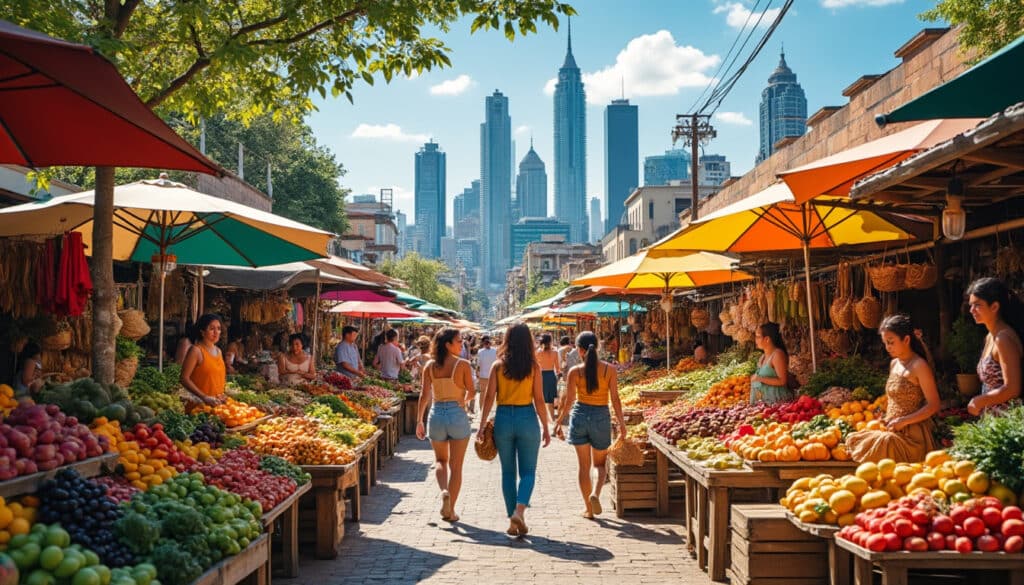
Cheapest time to visit Sao Paulo
When planning a visit to the largest city in the Southern Hemisphere, São Paulo, budget-conscious travelers often ponder the most economical times to explore this sprawling metropolis. Known for its rich cultural tapestry, sprawling urban landscape, and energetic vibe, São…
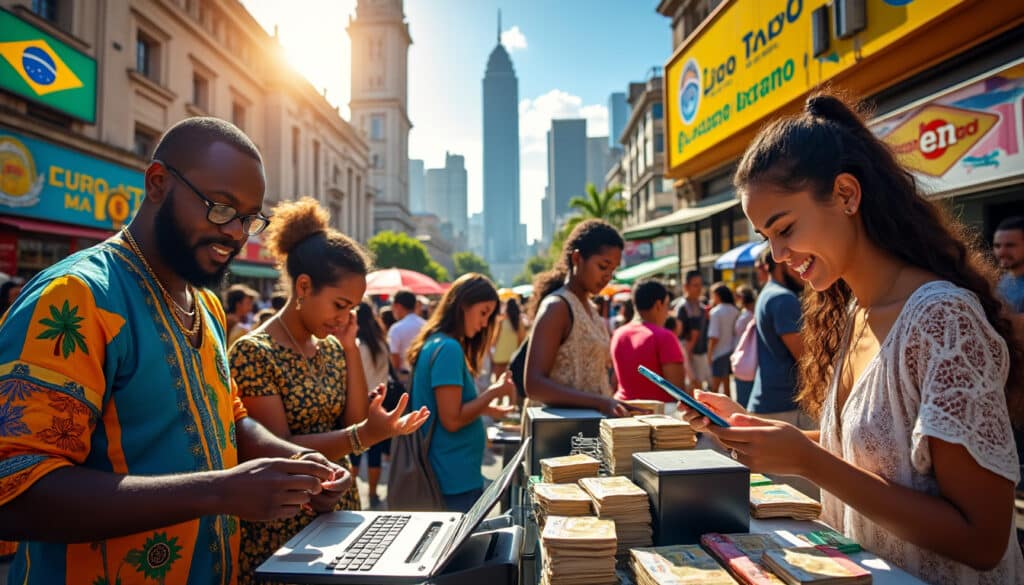
Currency and payments in Sao Paulo
Understanding the dynamics of currency and payment systems is essential when planning a trip to Sao Paulo, one of Brazil’s most vibrant cities. From bustling marketplaces to high-end shopping malls, each transaction echoes the diverse blend of modern and traditional…
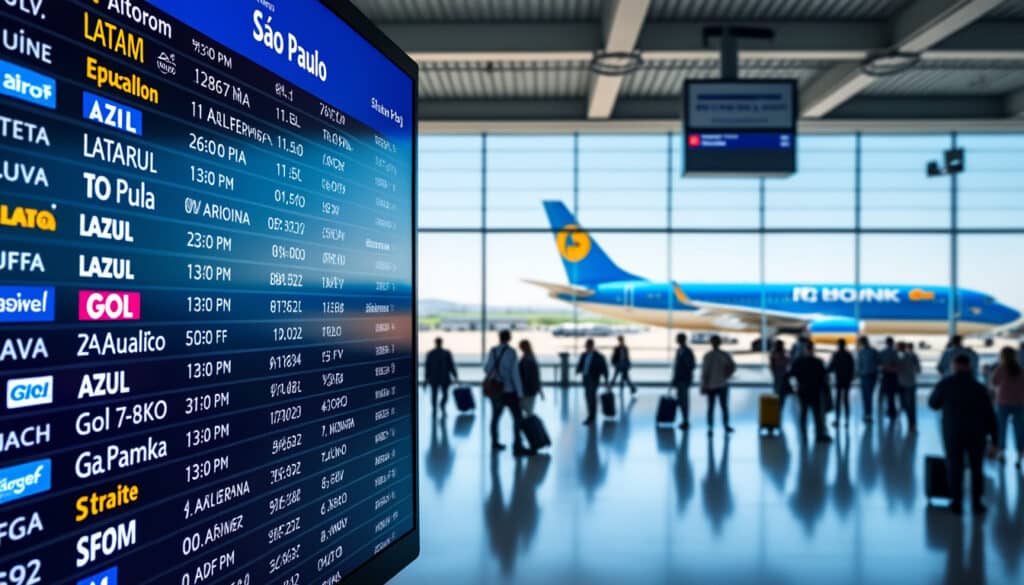
Flights to Sao Paulo and airline options
As one of the largest cities in the world, São Paulo is a vibrant melting pot of cultures, industries, and events. Whether you’re drawn by the rich tapestry of urban life, the allure of Brazilian carnival, or the intriguing arts…

Currency and tipping in Sao Paulo
São Paulo is more than just Brazil’s financial hub; it’s a cultural mecca that beckons travelers with its enticing mix of art, gastronomy, and rich history. Yet, navigating through its vibrant offerings requires more than an itinerary. Among the many…
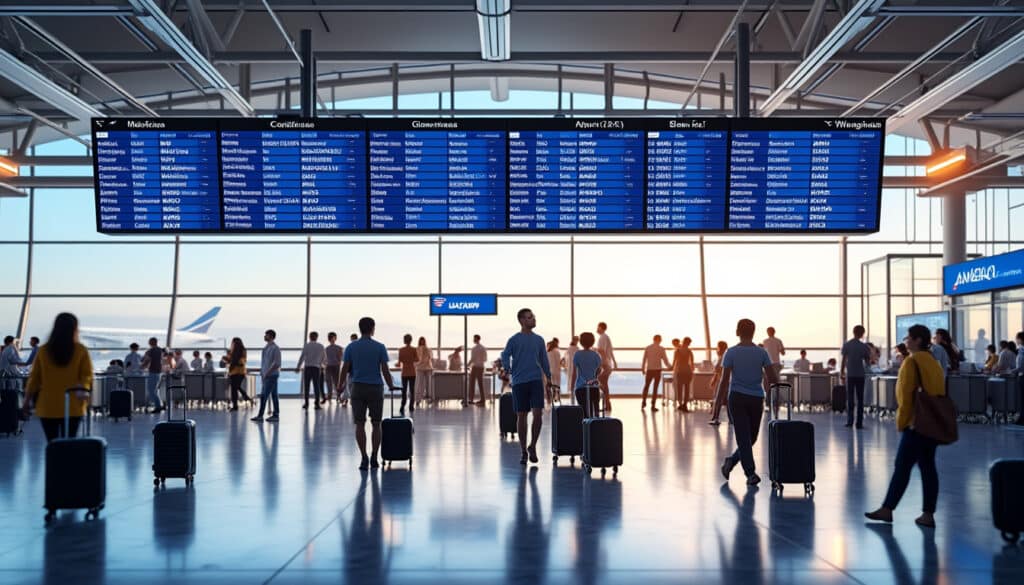
Flights to Sao Paulo and airline options
Finding the perfect flight to bustling Sao Paulo can set the right tone for your South American adventure. Whether you’re exploring its rich urban culture or enjoying a cup of renowned Brazilian coffee, choosing the right airline and flight option…
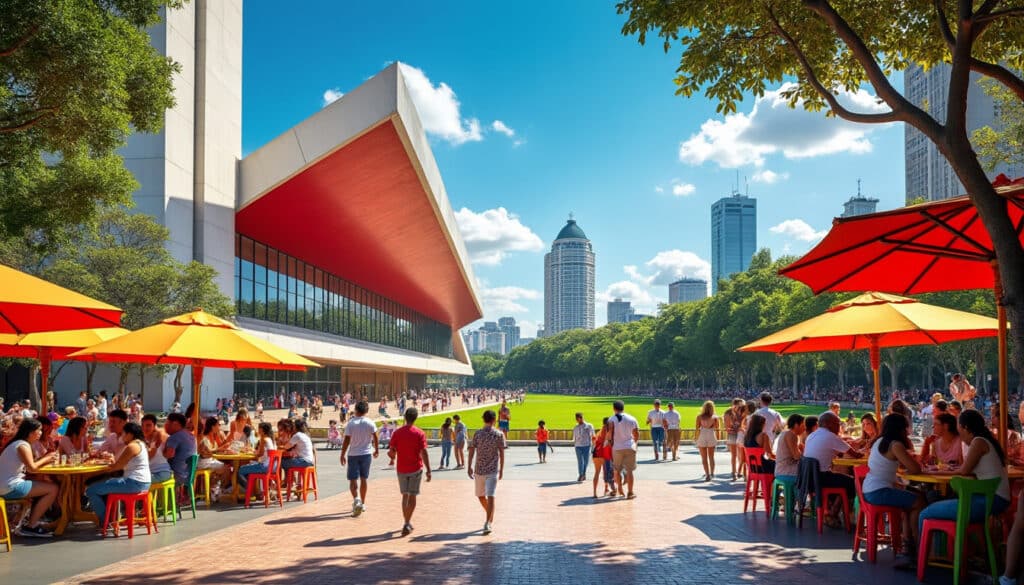
How many days to stay in Sao Paulo?
Planning a trip to São Paulo, one of the largest cities in the world and the economic heartbeat of Brazil, can be both exciting and overwhelming. With its cosmopolitan flair, dynamic urban culture, and stunning diversity, understanding how many days…
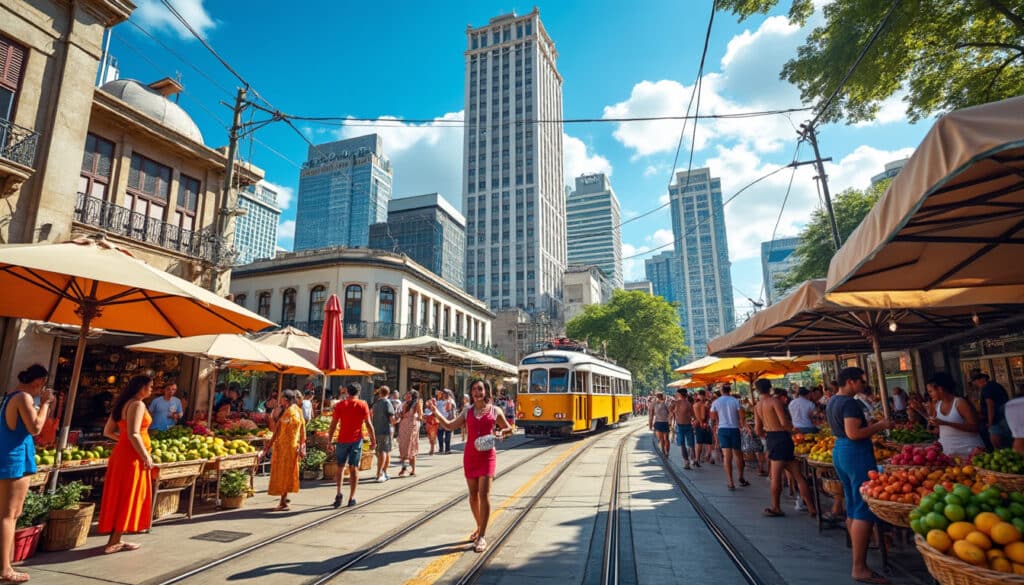
São Paulo, the largest city in Brazil, offers a melting pot of cultures, sights, and experiences. However, the question persists: is it affordable? For those considering a visit or a stay, understanding the costs associated with life in São Paulo…

In the bustling city of São Paulo, with its vibrant culture, diverse neighborhoods, and endless attractions, navigating with heavy luggage can be a cumbersome affair. Fortunately, a variety of luggage storage services cater to those who wish to explore the…
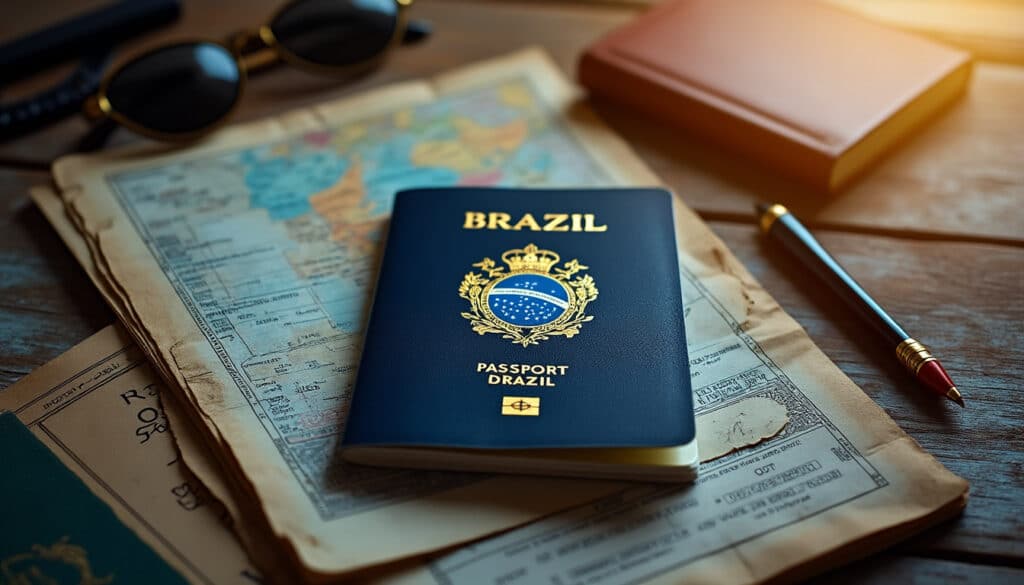
Passport and travel documents for Sao Paulo
Brazil, with its vibrant culture, breathtaking landscapes, and dynamic cities like São Paulo, is a destination that beckons travelers from around the globe. Whether it’s the allure of samba, the majestic mountains, or the tantalizing aroma of Brazilian coffee, a…
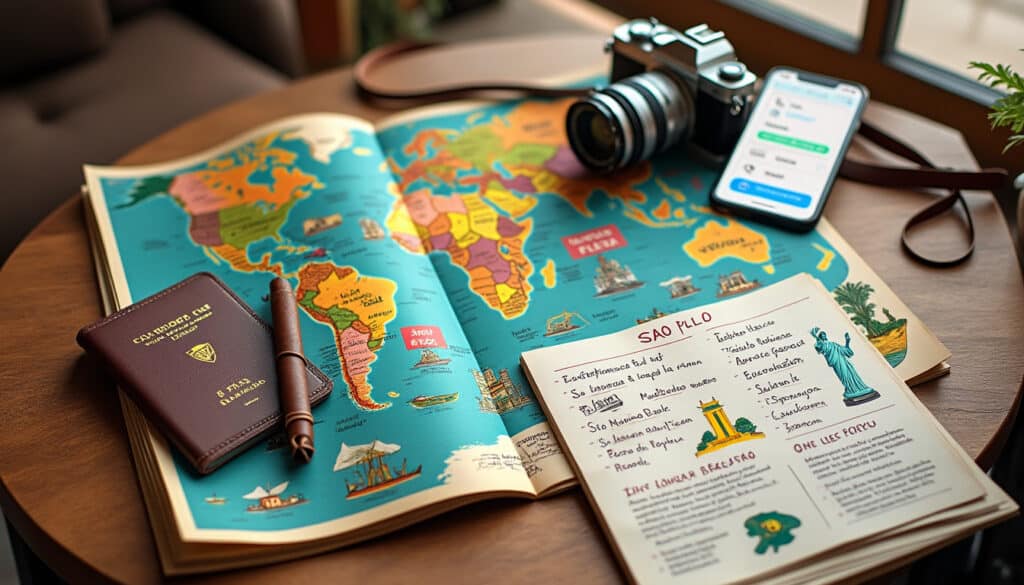
Planning your trip to Sao Paulo
Exploring São Paulo, Brazil’s bustling metropolis, is akin to journeying into the heart of the nation’s cultural and economic dynamo. This sprawling city with its towering skyscrapers and vibrant neighborhoods offers an exciting mix of history, art, cuisine, and nightlife.…
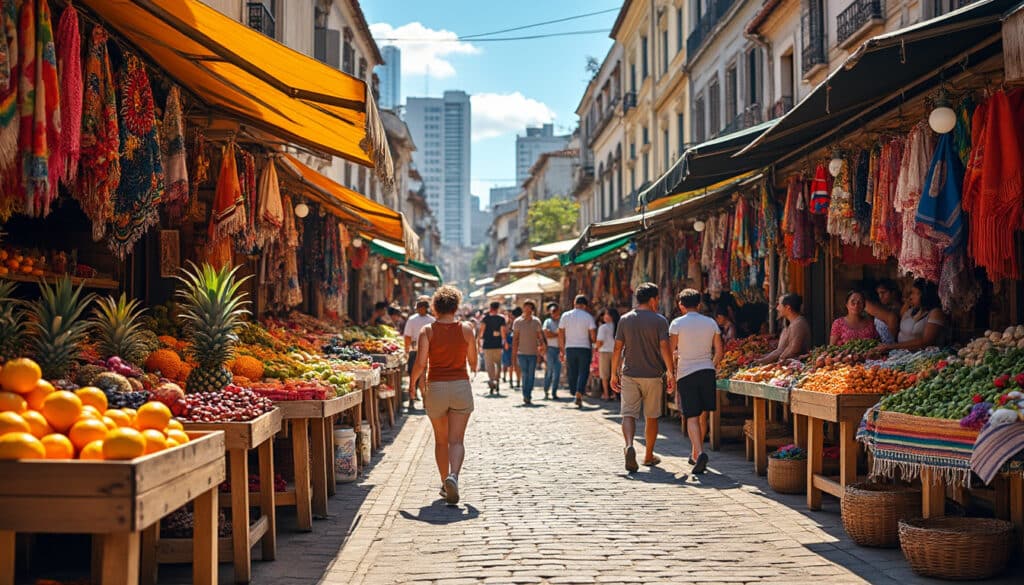
The sprawling metropolis of São Paulo, famously known as the economic and cultural heart of Brazil, offers a dynamic blend of lifestyles. When planning a trip or contemplating a move to this vibrant city, understanding the cost of living becomes…
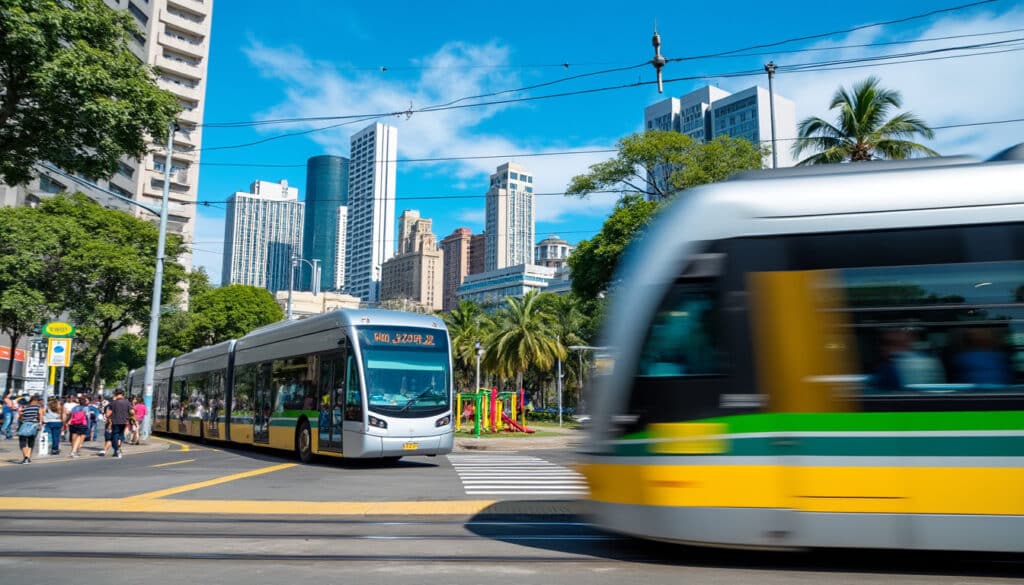
Public transport and payments in Sao Paulo
Known as a bustling metropolis and a melting pot of flavors and traditions, São Paulo is not just Brazil’s largest city but also an intricate web of transportation possibilities. Whether you’re a seasoned traveler or a first-time visitor, navigating this…
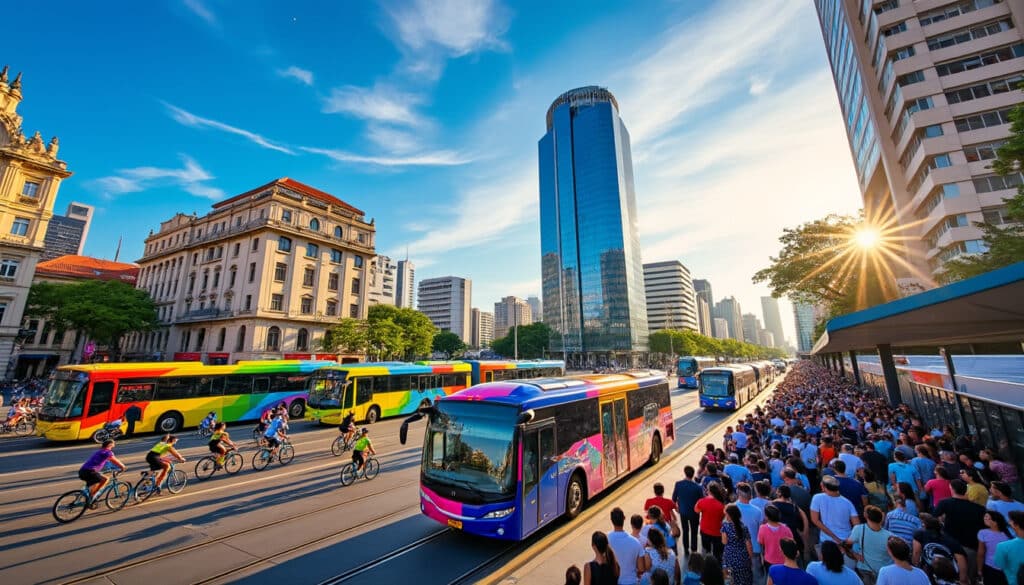
São Paulo, a vibrant metropolis and the beating heart of Brazil, is renowned for its diverse culture, dynamic economy, and its sprawling urban landscape. Navigating such a vast city can be daunting, but the public transport system in São Paulo…
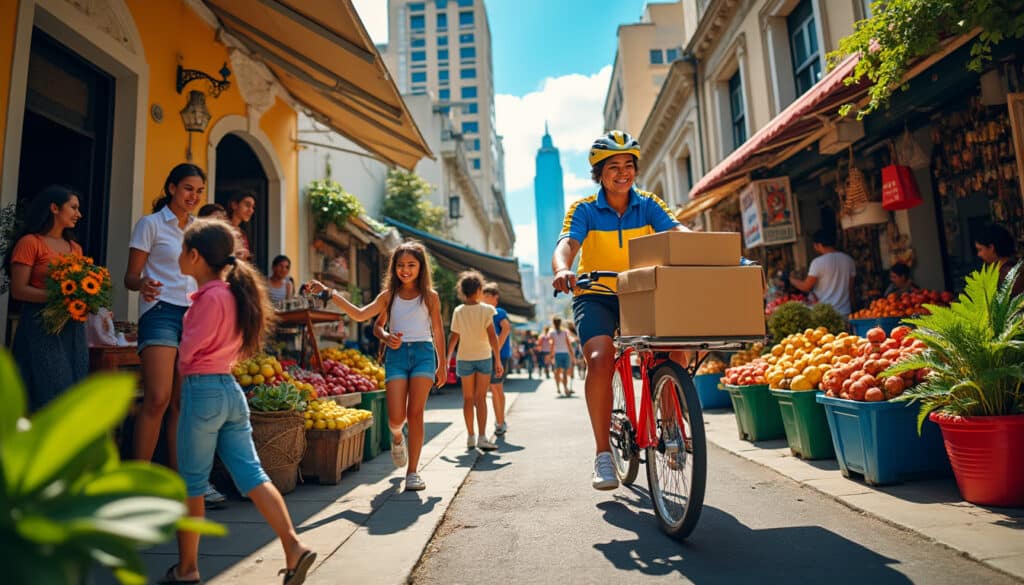
Shopping and delivery in Sao Paulo
Navigating the bustling metropolis of São Paulo can be a daunting task, especially when it comes to shopping and getting goods delivered. Boasting a vibrant mix of traditional markets, sprawling malls, and burgeoning online shops, the city offers an array…
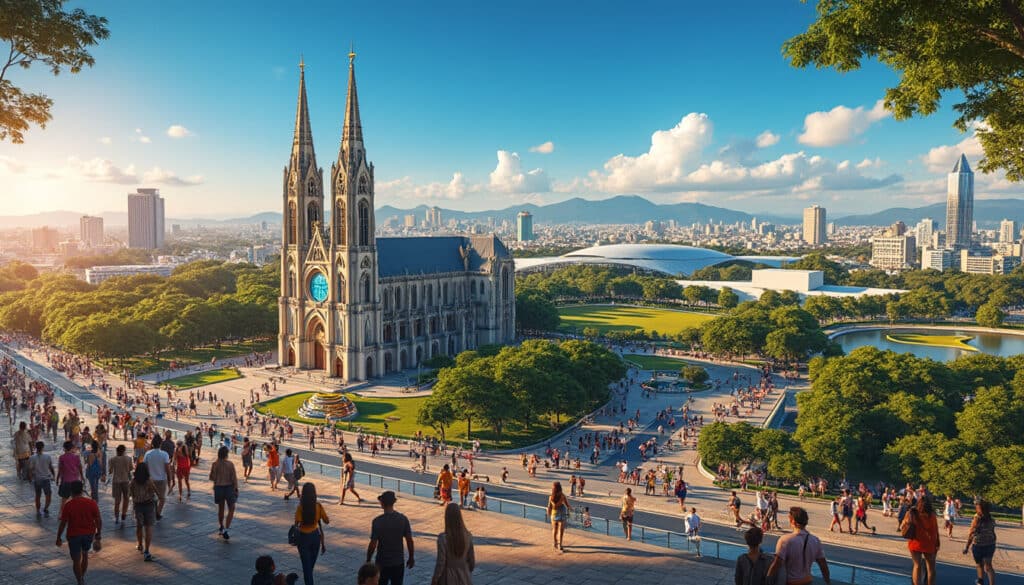
Sightseeing options in Sao Paulo
São Paulo, a vibrant metropolis, offers an abundance of sightseeing opportunities for visitors and locals alike. Known for its cultural richness and urban sprawl, the city is a mosaic of sights ranging from lush parks to monumental skyscrapers, offering something…
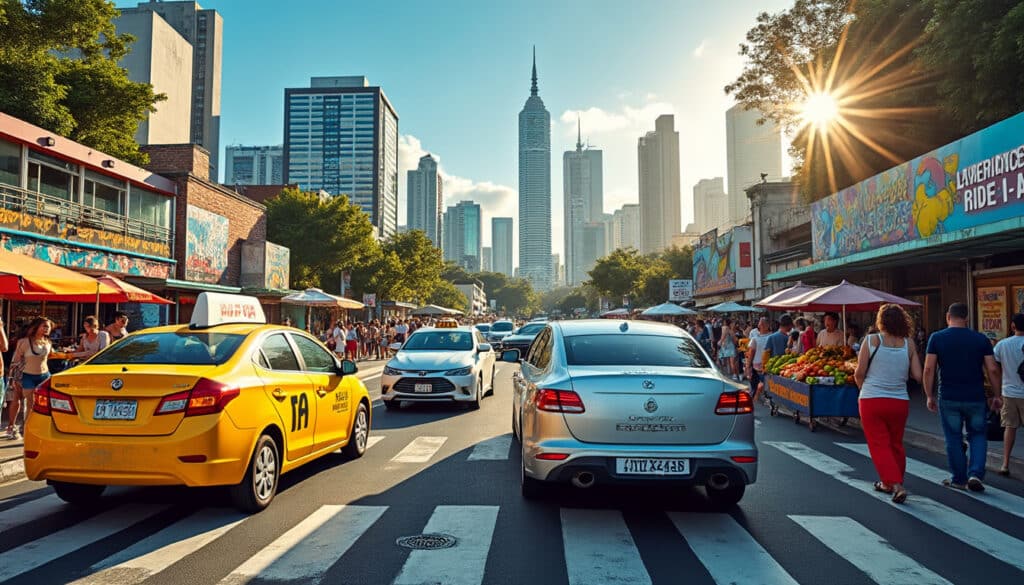
Taxi and cab services in Sao Paulo
São Paulo, a bustling metropolis with a vibrant urban fabric, is known for its dynamic lifestyle that blends business, culture, and entertainment. One vital aspect that keeps this city moving is its robust network of taxi and cab services. Whether…
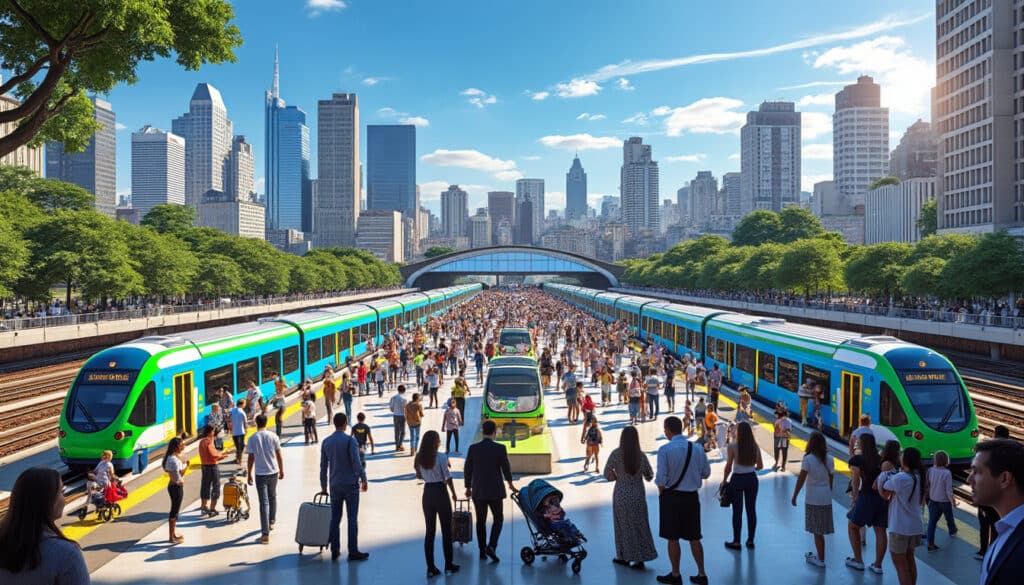
Train travel and stations in Sao Paulo
📌 With its iconic skyline and bustling streets, Sao Paulo is a city that marches to the beat of its own rhythm. As Brazil’s financial heart, the megalopolis is renowned for its speed not just in the boardrooms but also…
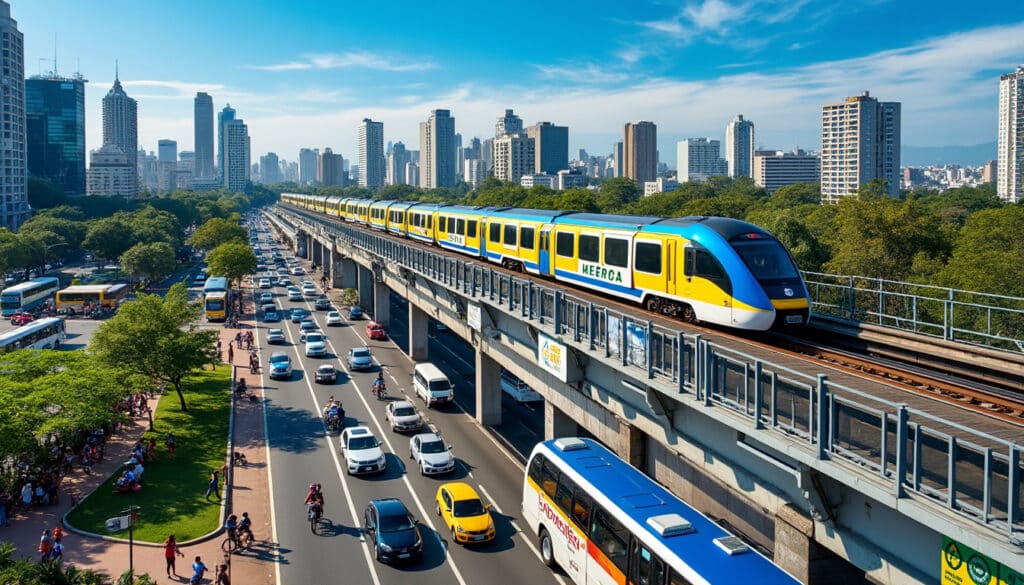
Transportation and mobility in Sao Paulo
São Paulo, a city that never sleeps, is a pulsating metropolis where transportation is both a necessity and an adventure. In 2025, with more than 22 million people navigating its vast urban expanse, getting from one point to another is…

Travel checklist for Sao Paulo
Navigating through the vibrant city of São Paulo requires a blend of preparation and curiosity. As Brazil’s bustling economic center, São Paulo attracts international tourists eager to experience its dynamic blend of culture, history, and urban life. From its origins…

Trip costs and budgeting in Sao Paulo
Sao Paulo, Brazil’s bustling metropolis, is a city that never sleeps, offering a plethora of experiences for every kind of traveler. Whether you’re admiring its vibrant street art, indulging in a gastronomic adventure, or immersing yourself in its rich cultural…
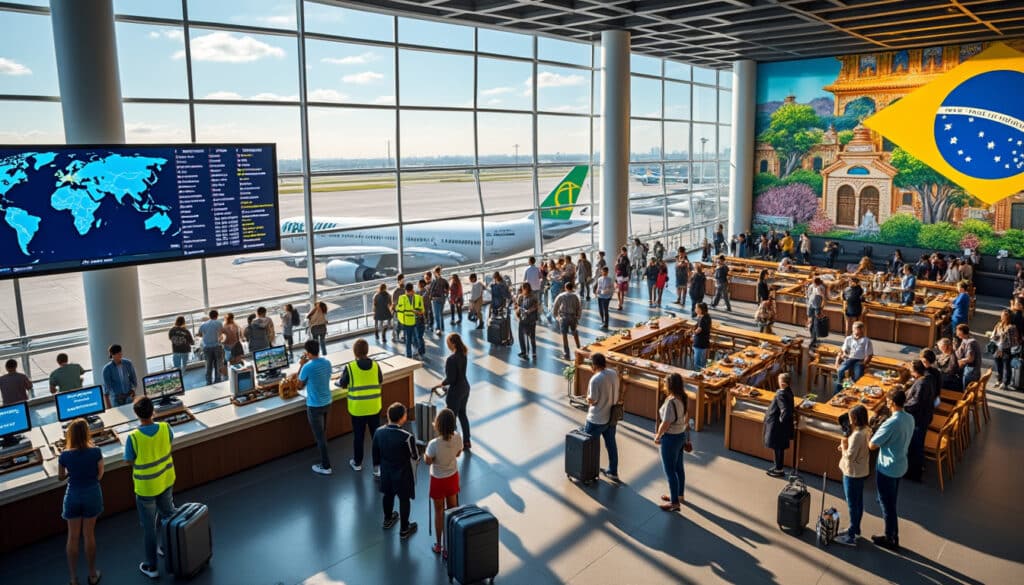
São Paulo’s Guarulhos International Airport, commonly referred to as GRU, stands as the largest airport in Brazil and one of the busiest in Latin America. For both international travelers and locals, navigating this vast and bustling airport can be a…

Visa requirements for Sao Paulo
Traveling to São Paulo, Brazil, opens doors to vibrant urban landscapes, rich culture, and diverse culinary scenes. As an essential preparatory step, understanding the visa requirements is of paramount importance to ensure a seamless journey. Whether it’s for tourism, business,…
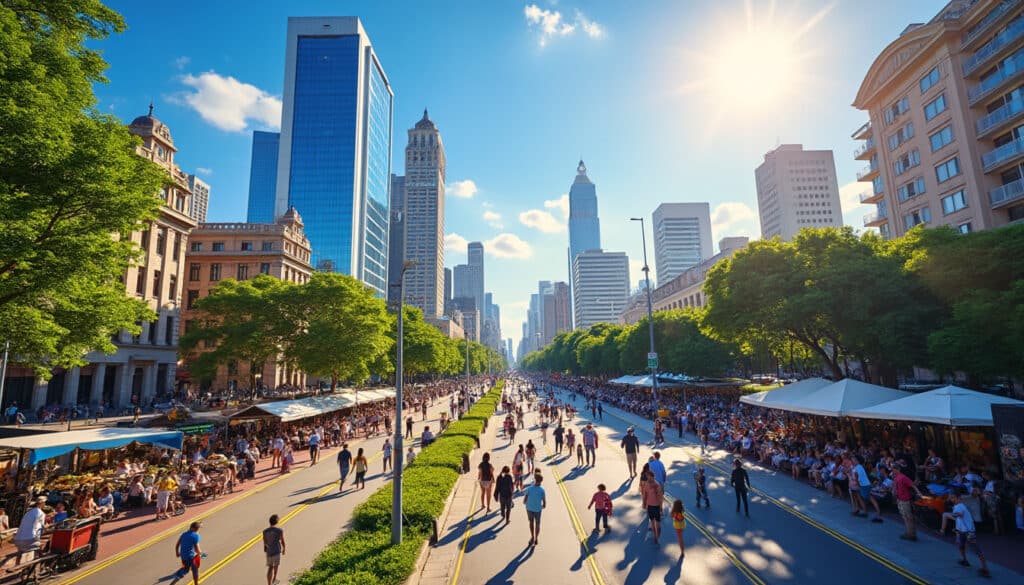
When is the best time to visit Sao Paulo?
As a sprawling metropolis nestled in the heart of Brazil, São Paulo is a city that thrives on energy, culture, and bustling life. With a melange of vibrant festivals, world-class dining, and a unique cultural tapestry, this city has something…

